Solar eclipse of October 23, 1957
| Solar eclipse of October 23, 1957 | |
|---|---|
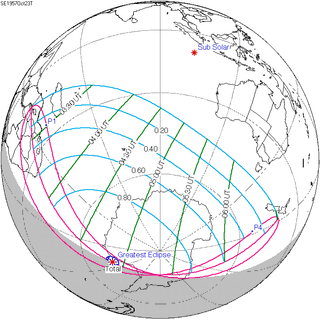 Map | |
| Type of eclipse | |
| Nature | Total |
| Gamma | 1.0022 |
| Magnitude | 1.0013 |
| Maximum eclipse | |
| Duration | - |
| Coordinates | 71°12′S 23°06′W / 71.2°S 23.1°W |
| Max. width of band | - km |
| Times (UTC) | |
| Greatest eclipse | 4:54:02 |
| References | |
| Saros | 123 (50 of 70) |
| Catalog # (SE5000) | 9415 |
A total solar eclipse occurred on October 23, 1957. A solar eclipse occurs when the Moon passes between Earth and the Sun, thereby totally or partly obscuring the image of the Sun for a viewer on Earth. A total solar eclipse occurs when the Moon's apparent diameter is larger than the Sun's, blocking all direct sunlight, turning day into darkness. Totality occurs in a narrow path across Earth's surface, with the partial solar eclipse visible over a surrounding region thousands of kilometres wide.
Related eclipses
Solar eclipses of 1957-1960
Each member in a semester series of solar eclipses repeats approximately every 177 days and 4 hours (a semester) at alternating nodes of the Moon's orbit.
| Descending node | Ascending node | |||
|---|---|---|---|---|
| Saros | Map | Saros | Map | |
| 118 |  April 30, 1957 Annular |
123 |  October 23, 1957 Total | |
| 128 |  April 19, 1958 Annular |
133 |  October 12, 1958 Total | |
| 138 |  April 8, 1959 Annular |
143 | 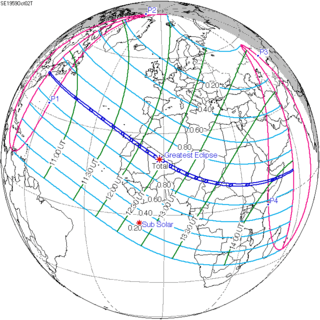 October 2, 1959 Total | |
| 148 |  March 27, 1960 Partial |
153 |  September 20, 1960 Partial | |
Metonic series
The metonic series repeats eclipses every 19 years (6939.69 days), lasting about 5 cycles. Eclipses occur in nearly the same calendar date. In addition the octon subseries repeats 1/5 of that or every 3.8 years (1387.94 days).
| 21 eclipse events between August 12, 1942 and August 11, 2018 | ||||
|---|---|---|---|---|
| August 10-12 | May 30 | March 18 | January 4-5 | October 23-24 |
| 115 | 117 | 119 | 121 | 123 |
 August 12, 1942 |
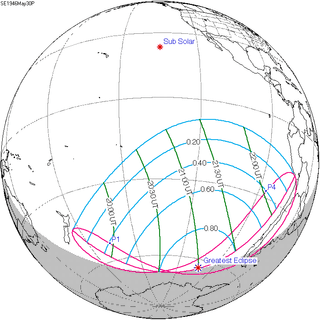 May 30, 1946 |
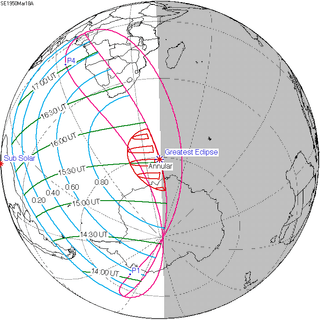 March 18, 1950 |
 January 5, 1954 |
 October 23, 1957 |
| 125 | 127 | 129 | 131 | 133 |
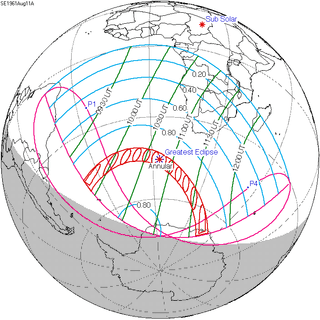 August 11, 1961 |
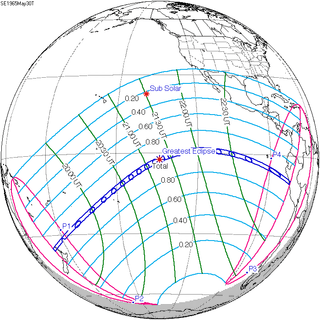 May 30, 1965 |
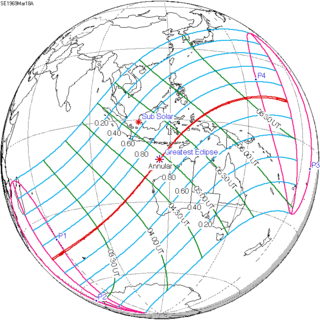 March 18, 1969 |
 January 4, 1973 |
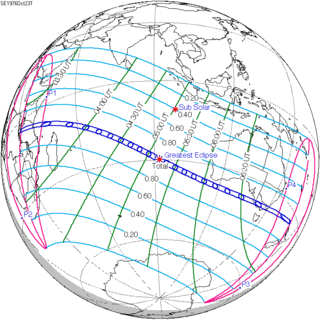 October 23, 1976 |
| 135 | 137 | 139 | 141 | 143 |
 August 10, 1980 |
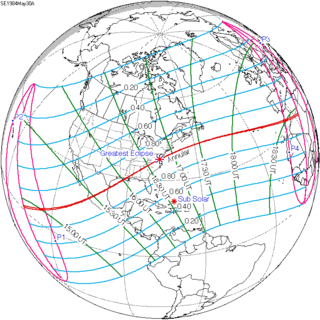 May 30, 1984 |
 March 18, 1988 |
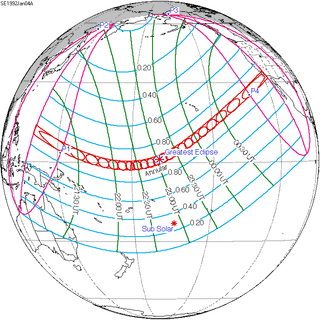 January 4, 1992 |
 October 24, 1995 |
| 145 | 147 | 149 | 151 | 153 |
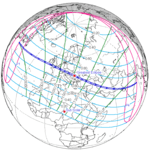 August 11, 1999 |
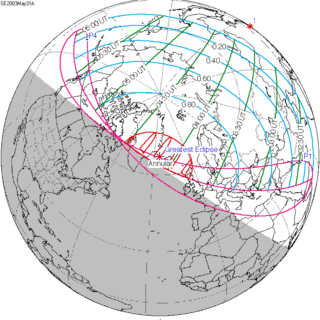 May 31, 2003 |
 March 19, 2007 |
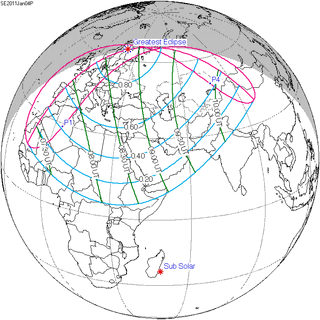 January 4, 2011 |
 October 23, 2014 |
| 155 | ||||
 August 11, 2018 | ||||
Notes
References
- Earth visibility chart and eclipse statistics Eclipse Predictions by Fred Espenak, NASA/GSFC
| Wikimedia Commons has media related to Solar eclipse of 1957 October 23. |
